HABCOM… HABCOM… This is Wataru Okamoto speaking,
Can you hear me… OVER!
(A copy from the daily Mars Desert Research Station Crew 191 Team Asia Radio Conversation)

WHEN ALL THOSE RADIATION ATTACK US !
(A copy from Mars publication data about Radio Frequency and Radiation)
CAN YOU…
Can you imagine when we are living in the place where we can not run from the radiation? Or did you ever feel that your body influenced by some radio frequency radiation?
Can we also imagine how big all the radiation when an astronaut doing a space travel or bring a mission to space?
There are some studies showing that Radio Frequency Radiation (RFR) can induce adaptive responses in human cells and animals during which they become more resistant against challenging doses of mutagenic agents such as high levels of radiation.
In my perspective of view, practicing with Radio Frequency Radiation could be help for the Astronauts. But how to explain?
Here is the fact:
In space, the radiation damaged the tiny branches on neurons that help transmit electric signals to the nerve cell body. This led to a loss in learning and memory. The exposed animals performed poorly on behavioral tests that measure intelligence, and they showed higher, constant anxiety levels.
Other example also said that astronauts returning from extended space missions carry chromosomal aberrations in their blood cells. Most of the chromosomal aberrations and other DNA damages are due to oxidation stress from the free radicals produced by cosmic radiations.
A BIT (AGAIN) ABOUT MARS
However, it is now impossible to ignore the fact that a trip to Mars carries a radiation exposure risk higher than current guidelines recommend. So, do we abandon the current guidelines and let astronauts take their chances?
But well, after all, the links between tobacco and cancer are well known yet people still choose to smoke :-), right?
One thing is certain: there can be no more romantic idealism. No amount of wishful thinking, or crowd-sourcing, or press releasing can circumvent this problem. Space radiation is dangerous, potentially deadly. Manned missions to Mars with current technology will carry significant exposure risks. So let say that RADIATION = DANGER POINT
A high level of radiation is a limiting factor for manned Mars exploration. As an example the Curiosity rover contained a particle and neutron detector for measuring radiation on the surface of Mars in order to devise more efficient radiation shielding inside and outside future spacecraft, and to develop more effective countermeasures to protect astronauts’ health. The radiation data from Curiosity also added knowledge to the debate about the habitability of Mars. A mission to the Red Planet will be the most expensive project in this planet and the most prestigious thing in this century of human technology.
“The space radiation environment will be a critical consideration for everything in the astronauts’ daily lives, both on the journeys between Earth and Mars and on the surface,” said Ruthan Lewis, an architect and engineer with the human spaceflight program at NASA’s Goddard Space Flight Center in Greenbelt, Maryland. “You’re constantly being bombarded by some amount of radiation.”
And in MDRS simulation we were learn a lot about Radiation, about levels of how we consume and contaminated something, and about the limit how we need to think twice when some trouble happened during the mission. Some “cases” bring and make us focus on the real destination of the Team Asia mission. Because we all have a dream.
DREAM AND HOPE from the METAPHOR of MARS
As a small human colony on MDRS right now, we are CREW 191 Team Asia, and feel like we are living in the “orbit”. If Earth and Mars had perfectly circular orbits, their minimum distance would always be the same. However, they have elliptical paths, so we are here have a strong connection one and other become a “dream crew” and build an imaginary twin orbit like Mars and Earth. The orbits of both planets are also slightly tilted with respect to each other. All of these factors mean that not all close encounters are equal.
It’s a fact that we “felt like” living on Mars, because we are! Because we had a same plan before arriving in many purpose and directions, it’s like on Mars itself, we could learn a lot of things on Mars (reality) as a (future) second Earth.
Makoto Kawamura thinking like: “pieces of Mars have been found on Earth”, it’s a kind of metaphor, means that as a human we are already connected each other, as a social human being, always thinking as a colony, as a team, in a wider concept of human civilization. Like between Mars and Earth connection, it is believed that trace amounts of the Martian atmosphere were within meteorites that the planet ejected. These meteorites then orbited the solar system for millions of years among the other objects and solar debris before eventually entering the Earth’s atmosphere and crashing to the ground.
From that fact, he believe that the “hidden potential” was grow and appeared during the MDRS SIM crashing to the new idea and working for “new” potential. He supports a more empowered way of working and removing constraints which may prevent someone from doing their job properly.
“Mars experiences huge dust storms – the largest in our solar system”. This is because of the elliptical shape of Mars’ orbital path around the Sun. The orbital path is more elongated than many of the other planets, and this oval shaped orbit results in fierce dust storms that cover the entire planet and can last for many months. Perhaps this idea was brought to Wataru Okamoto to create his project, as written in his Crew 191 bio. He wants to make sure all of the information on weather collected during the MDRS sim is more thoroughly analyzed.
Miho Tsukishiro may want to see something in a different angle and perspective. She believes that all the experiences at MDRS were close to “properly managed” and helped to start an effort to create a synergistic way of working, where the sum is greater than the parts. On Mars, this condition will happen if Mars is closest to the Sun in its orbit, and the southern hemisphere points toward the Sun, causing a very short but fiercely hot summer. In the north it experiences a brief but cold winter. When the planet is farthest from the Sun, the Red Planet experiences a long and mild summer because the northern hemisphere points toward the Sun.
As crew commander, Yusuke Murakami is always trying to do the best as he can for the mission, to go up to the highest zone we can reach, the highest level of how to follow the sim. He also encourages multi-disciplinary work where teams cut across organizational divides… just remembering of “the tallest mountain known in our solar system is on Mars” named Olympus Mons. It is the tallest mountain in the entire solar system rising to the height of 22 km (14 miles), and it is also the largest and youngest of the non-active volcanoes on Mars. While no team ever gets everything it wants, leaders can head off a lot of problems by taking the time to get the essential pieces in place from the start.
Fumiei Morisawa said, as a team, we foster flexibility and responsiveness, especially the ability to respond to change. As a team we need to respect each other, not being selfish or individualistic, and in this Team Asia he believe that we all met here for some reason, like the reason why Mars have a polar ice cap that these caps are made of carbon dioxide ice as well as water ice. During the southern hemisphere’s summer, much of the ice cap sublimates, a process in which the ice turns straight back into gas, leaving behind what is known as the residual polar ice cap. So “Mars is the only other planet besides Earth that has polar ice caps”. The northern cap is called the Planum Boreum, with Planum Australe in the south. Water ice has also been found under the Martian ice caps.
Kai Takeda is the youngest member in Team Asia crew, and he likes to say that “With the exception of Earth, Mars is the most hospitable to life”. The connection between a GreenHAB at MDRS and also all those activities during the mission positively make him proud of his project. Like on Mars, we need to build a real connection between “Human” and “Plant”… and for the future Martian colony, I think it’s impossible not to move in this direction.
Venzha Christ agrees about “Mars was once believed to be home to intelligent life” because came from the discovery of lines or grooves in the surface called canali by Italian astronomer Giovanni Schiaparelli. He believed that these were not naturally occurring and were proof of intelligent life. However, these were later shown to be an optical illusion.
HABCOM…HABCOM… Can you hear me…
(…still whispering on our daily night after “oyasumi” sleeping time…)
When Mars and Earth are close to each other, Mars appears very bright in our sky. It also makes it easier to see with telescopes or the naked eye. The Red Planet comes close enough for exceptional viewing only once or twice every 15 or 17 years. So we are Crew 191 Team Asia as a solid team always help each other for daily protocol rules and activities during our stay at MDRS. But we need to be focused, disciplined and follow the path of all protocols on a Mars mission.
Outer Space
(Tori Hart, 2014)
Bodies soar through Outerspace
Kissing their stars though a little too far to Taste
The Milky Way fell like Silk water falling down our Shoulders
Delicate, Light, and Slick
We are in our own Solar System
Flying circles around our Radiating Sun
As we whisper Buonanotte to that Eternal Night
We shout Buongiorno to the Beautiful new Day.
SPACE IS A DANGER PLACE
We knew the biological effects of space radiations on astronauts are the main concern in deep space missions. Many investigations have been made to find the best way to overcome those problems in extended space travels. The radiation environment in deep space is several hundred times what it is on Earth, and that’s even inside a shielded spacecraft.
How about this later on?
A new report shows just how dangerous it could be to human brains. Radiation exposure from a Mars missions could cook brain cells, causing chronic dementia and memory loss, and leaving astronauts with debilitating anxiety levels, the study has found. This could throw off their thinking and judgment, impairing decision-making and multi-tasking.
But…
From the latest research on this field, a scientist said that Radio Frequency Radiation can induce Adaptive Response (AR), meaning that during AR human cells become more resistant to challenging doses’ radiation. Then we can say ; RFR can help astronauts during their space missions.
Exposure to Radio Frequency Radiation before or during space missions while choosing the optimized dosimetric parameters such as determined power density and frequency and duration of exposure can help astronauts in their travels.
In 2012, Hamid Abdollahi, Maryam Teymouri, and Sara Khademi carried out deep research about this, including a statement that astronaut protection against radiation in space is one of the most challenging and complex problems for deep space missions.
Conclusion from their research: “We hypothesize that RFR can be used as a non-genotoxic agent for radiation protection in space. Exposure to RFR along with selecting the best situation to induce the highest AR may help astronauts in space missions. However, more studies are warranted to apply this therapy for space travel. Nevertheless, it will be a good choice for thinking about astronaut’s protection in space missions”.
NOTE – AWARE
Radiation is “a risk we need to learn more about over the next decade so we can do the proper mitigation and do the best we can for the astronauts who are going to be putting their lives at risk for a number of different threats,” Ron Turner, a senior science adviser at NASA’s Institute for Advanced Concepts in Atlanta. But the optimum solution might be the one that, for now, seems most difficult—going faster and avoiding as much radiation as possible. He says, “The best bang for the buck is advanced propulsion, not shielding.”
For example, very large solar flares – intense bursts of radiation and particles thrown out by the sun – could cause more damage as these have the power to wipe out electrical equipment and can deliver doses high enough to kill.
Cosmic radiation, which comes from outside our solar system, is harder to protect against and can also constantly pepper the bodies of astronauts, but this can be monitored for and tends occur at a low level.
Even once on the surface of Mars, radiation will still be a problem as the planet’s atmosphere does not offer the same kind of protection as on Earth. Like solar activity, cosmic rays have the potential to cause cancer. These high-energy, high-velocity particles originate from outside the solar system and can severely damage human cells. Unlike radiation from the sun, however, cosmic rays could also spark long-term degenerative effects while still in space, including heart disease, reduced immune system effectiveness and neurological symptoms resembling Alzheimer’s.
“There’s a lot of good science to be done on the Red Planet, but a trip to interplanetary space carries more radiation risk than working in low-Earth orbit,” said Jonathan Pellish, a space radiation engineer at Goddard. “Ultimately, the solution to radiation will have to be a combination of things.”
Some of the solutions are technology-related that we have already, like hydrogen-rich materials, but some of it will necessarily be cutting-edge concepts that we haven’t even thought of yet.
So be aware…
MDRS CREW 191 TEAM ASIA NEAR FUTURE PLAN
After MDRS, we have several real plans to continue this mission, and also many activities to prepare for all continuing projects. Countries like Japan and Indonesia, as well as other places in Asia, will announce soon. From those activities such as SIM, workshops, presentations and collaboration on interdisciplinary field and background, we will bring our knowledge in space science and space exploration to the wider society. Some like what we (as human on Earth) will do for interplanetary space travel projects. Most is about: “How ready are we as humans on Earth to have a new colony outside our planet”. We also realize that only 16 of the 39 missions to the Red Planet have ever been successful.
Team Asia realizes that some have difficulties point of view, for example, ensuring a supportive context is often challenging for teams that are geographically distributed and digitally dependent, because the resources available to members may vary a lot.
So… “HABCOM, Can You Hear Me?…” 🙂
MDRS Crew 191 Team Asia (2018)
JAPAN – INDONESIA
Yusuke Murakami (commander), Miho Tsukishiro, Makoto Kawamura, Fumiei Morisawa, Venzha Christ & Wataru Oka


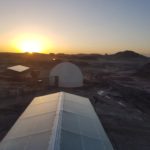


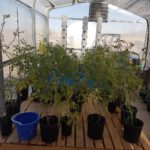
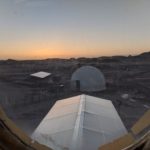


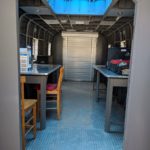
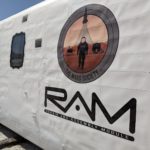

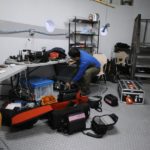


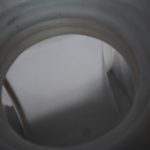

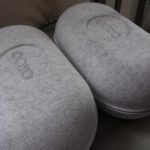
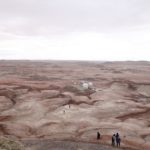
You must be logged in to post a comment.